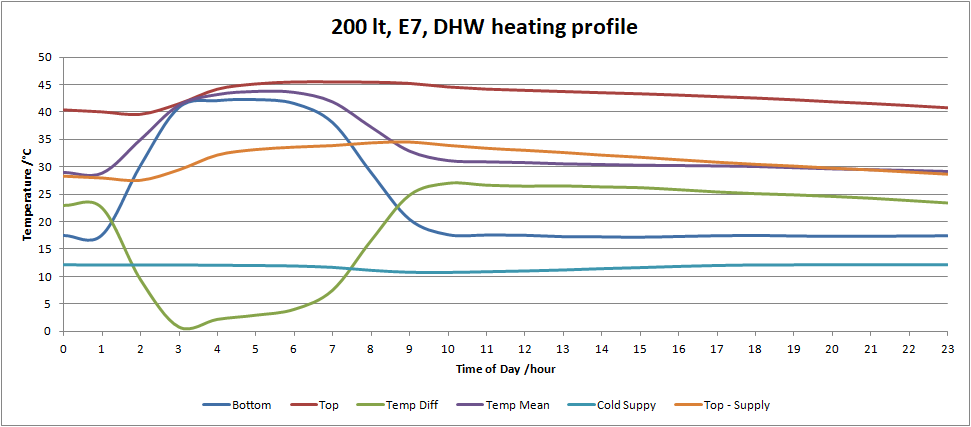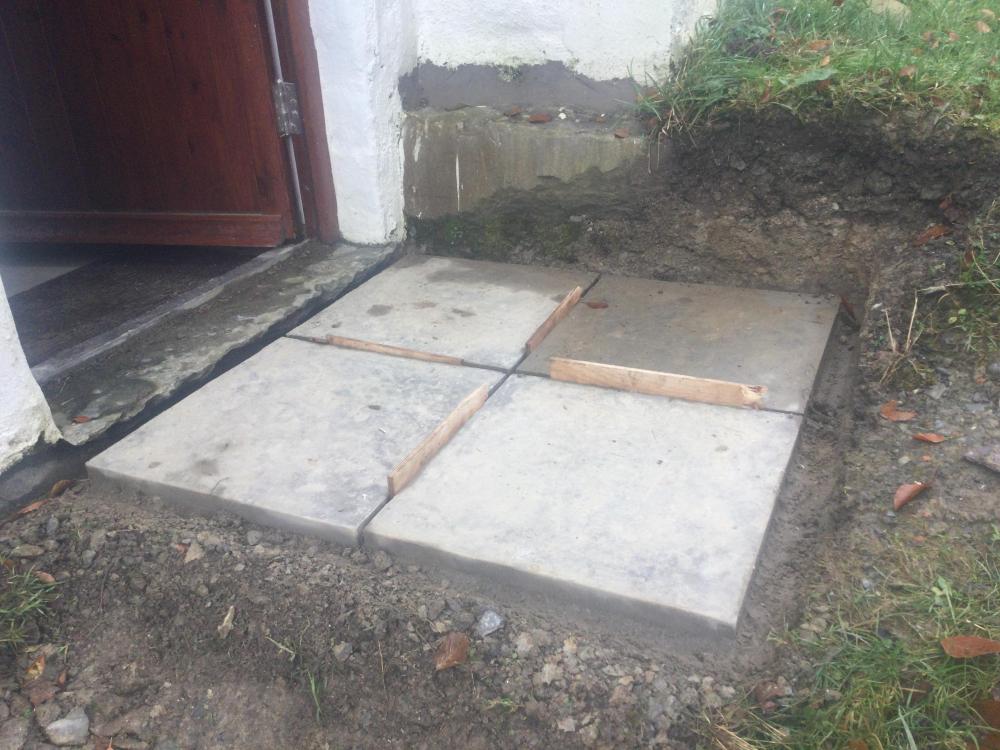Leaderboard
Popular Content
Showing content with the highest reputation on 11/10/21 in all areas
-
We're using it on our intermediate floors before we lay our ufh. It works out slightly more than PIR but that's before you factor in the faff of laying the boards flat on uneven slabs. If using it for you gound floor insualtion, you need at least double depth compared to PIR. No prep or membranes required on intermediate floors - just shuttering voids.3 points
-
The web site pavingexpert.com is an excellent source of information. Do you have details of the type of sandstone being used?1 point
-
I'm a good way through putting up my internal walls and creating a cavity against an existing outer wall and I agree with @Johnny Jekyll it's been a pain. I'm the brickie, so no problems with me re-laying blocks umpteen times, or removing deformities on the blocks to get things as straight as I can for the PIR boards, but truly a pain. Beads or injected/poured PIR if a ever get the silly idea to do this again.1 point
-
The 1.22kW in 24 hour cylinder will lose less than 3K in 12 hours. The issue with ASHP in my experience is more related to the DHW priority, which can leave extended periods of time with no heating in the mornings when everyone is using the shower. I’ve solved this personally by heating the cylinder via the “legionnaires” programme on E7 overnight - to 70+ degrees - then leaving DHW “off” until lunch when the ASHP is asked to reheat it to 48 degrees. Using the Bulb 5p overnight rate would make this even better but even with normal E7 the reduction in COP works out neutral cost wise and ensures I have heating in the morning.1 point
-
1 point
-
You’ll still need the DPM under the insulated screed at ground floor level. Not sure why you’d use the insulated screed at first floor level though?1 point
-
Follow the money, that is the usual way.1 point
-
They were all at fault. As soon as it happened they try to blame BC. But they were all ignorant and complacent in it. The architect had no real idea about cladding. The cladding designer seemed to have little idea. The contractor did his own thing in substituted materials, little quality control and installed cavity barriers incorrectly. The fire engineer didn’t consider the details fully. The manufacturer of products mislead everyone (to sell products) in knowledge of concerns and the BC officer was mislead, over worked and somewhat complacent. Everyone though it was someone else’s responsibility to consider fire safety in cladding. I would pin the biggest culpability on product manufacturer followed by the confused convoluted works procurement system.1 point
-
1 point
-
Yes, uploading the application today. PIR under the floor, where we only have 100mm available in some places because of existing floor and lintel levels, but will put as much as we can in where levels allow. That is all though, elsewhere will be mineral wool, plus lots of cavities for damp and services, and supplemented by wood-fibre board where we don't reach the targets. Although we only have to reach 'reasonably practicable' insulation , we have hit the target using 'area weighting'. and all areas are close in themselves. I had originally misread the standards, and thought we were a long way inside the target, but for a cold unoccupied building the targets are close to new-build. We would have aimed for this anyway. In calculating the wall effect, 600mm granite, I have used the figure the Scottish Government suggest for assessing old buildings, based on real tests, and that helps a lot*. Have also taken the advice on not ventilating the air-gap between wall and new internal stud, as that would suck out all the heat. so have allowed a compressed mineral wool seal at the head of the wall, closing the gap to the roof void. I don't know any figures but expect that our single-sized sand ground will also perform much better than 'normal' ground. It will be utterly dry. This will partly help in the heat loss through the ground due to the outer walls all being so close together. * Studies show that the central core being over 40% mortar helps a lot, so the granite does not absorb water and thus does not lose heat in wind drying. The mortar gets a bit damp but it migrates down. The bottom metre is damp all year, but of course is the central bit again. We are showing a hyload bitumen sheet to the inside bottom metre of the wall, to keep the damp out, and then hoping to resist any BCO suggestion to ventilate the void to let all the heat out.1 point
-
Standard for plumbers. They also like to leave all pipework uninsulated so you need to drain off a fair amount of tepid water before the hot or cold start flowing.1 point
-
I have used this https://www.squaredealupvcshop.co.uk/product/hardie-top-vent-strip/ in the past but it is quite expensive. I have also used stainless steel mesh on a roll, stapled to the battens https://www.amazon.co.uk/Stainless-Insect-Mesh-0-94mm-0-22mm/dp/B077XY6PWJ1 point
-
I don’t think it will act as a sub-floor. It’s more of a poured insulation/screed and does remove the need to cut the PIR insulation around pipes. However I do believe that you will need quite a bit more of the insulated screed than you would PIR so check with your SAP assessor for the thickness required. You will also need to think about where your DPM should be located and more than likely you will need a VCL and perimeter insulation before you place the final screed. I have experienced contractors laying the heating pipework above the sub-floor slab, covering it in the DPM and then pouring just enough insulated screed to cover the pipework leaving a flat surface to lay PIR insulation on. Then it’s just laying the VCL and placing the perimeter insulation before placing the final screed. In any case speak to your BCO and SAP assessor before you go down this route so that everyone is singing off the same hymn sheet.1 point
-
https://www.wemico.com/ I bought direct from them all sizes stocked!1 point
-
1 point
-
Internally I'd go 50mm PIR fixed to the 140mm timber frame, airtight vapor layer, 25mm battens and then the plasterboard. You don't have to have OSB on both sides. You do on twin stud walls and in some other cases but if you've only a 140mm stud then you generally don't need it. Obviously check with your engineer. The reason I'd go this route with the airtight vapor control layer is you can see it and patch it. eg if an electrician drills a hole for an external light you can seal the penetration or if an area wasn't taped correctly you can easily see and repair it. If you use an internal OSB layer as the airtight layer, then have PIR and the battens forming the service cavity you'll have to rip a chunk of the PIR off to enable you tape the electrical cable to the OSB or repair the poorly taped joint, etc. Also the airtight vapor control layer is a lot cheaper than an additional unnecessary layer of OSB. As a separate item I'd consider 35mm battens otherwise wider battens if using 25mm eg 65x25. When overlapping two sheets of plasterboard you're adding a lot of screws and the thin batten can split. It needs a bit more rigidity as it's the 50mm PIR between it and the main timber support structure.1 point
-
Wet UFH is fine under cabinets because the temperature is regulated by the water temp. You cannot put cabinets etc. On top of electric UFH as they generate local hot spots …. Even leaving a towel or at on the floor seriously heats up the floor underneath.1 point
-
Same issue with risers within the building!1 point
-
I have temp sensors in each room (part of Loxone light switch) as well as 1-wire temperature probes in the slab in each room. Advantage of the having temperature probes in the slab is they give more direct feedback and can help ensure the floor slab isn't heated too much or is too cold (to avoid condensation). Do you know how you will control UDF and/or if you'll use any home automation of any kind? Depending on this you may want a different type of temperature sensor.1 point
-
I used PlanPrinting24 (Hobs Reprographics) - very reasonable https://www.planprinting24.co.uk/1 point
-
I noticed this uplift issue after making a couple of code-4 soakers. Think I will reassign the existing 210mm code-4 roll to the stepped flashing, buy a roll of code-3 and start again with the soakers. There was me thinking more expensive code-4 = better soakers. Fascia to ridge is just 2m which means my sections should be about 1.2 allowing for an overlap and some over reach behind the gutter end. When I switched to mortar raking this afternoon I had make a cardboard stepped flashing template to visualize where mortar had to be removed. Prior to any slating this required some numeric juggling to allow for the extra height of two slates plus a soaker.1 point
-
All of the above. They all knew this would fail spectacularly in the event of a fire……1 point
-
You cannot tell the difference between pir and pur just by looking at them as they both look the same, the difference is in the chemistry. Normally a yellow/cream foam with foil, bitumen felt or glass tissue facings. The material used in packaging is expanded polystyrene, EPS, (you can normally see the individual beads that have been fused together). EPS is even more combustible than pur/pir and tends to shrink away from fire but does create molten droplets which can spread fire further. Rock and glass wool products are classed as non-combustible.1 point
-
Non-scientifically: The samples I have seen look very different. PUR looks like the white foam you see in packaging for delivery protection. PIR looks like a denser 'Crunchy' bar. I recall having a client's insurer panicking about 20 years ago, because there had been nasty fires where PUR was blamed. If I remember correctly, it drips as it burns, and so spreads fire quickly. It was then withdrawn from use in commercial composite steel panels, although still used in agricultural sheds. I have been involved in picking up the pieces in 2 fires. one was made much worse by polystyrene insulation in the roof, from a very different era. the other was a nasty fire on the outside face one of our own completed steel buildings: arson/vandals setting fire to a huge pile of bagged sawdust stacked against the metal wall. The paint on the steel cladding was burnt off, and the fibreglass cavity turned to sand. The screw fixings lost their heads and washers but stayed fixed. There was no structural damage or distortion. So I had the chance to discuss with the fire officer. He was amazed that the wall stood up to the heat and delighted that the insulation just disappeared. He said they were ready for the fire to enter the building. I told him it was designed as a fire barrier wall, (fibreglass to stay in place 15 minutes before failing) but his opinion was that they seldom worked so this was great. Went on to discuss PIR filled composite cladding. Off the record they hated it and were scared of it falling off the walls, so they never went near it. So, I think the fire service knew of problems with PIR but couldn't prevent its use. I asked if I could quote how impressed they were with our wall, and he said no: they are not allowed to comment on commercial products. If we had used rock-wool instead of fibreglass I wonder how it would have performed. Not as much difference as is implied I feel, unless it was the special fire resisting variety. Grenfell: I recall reading that the sample sent for fire testing had an added sheet of cement board that was never made part of the product. That would make it manufacturer specific. the other manufacturers' products would have behaved in the same way, but had not made the same claim. How to stop it happening again? Nobody was in overall charge. The old position of Borough Engineer would have been that person, but there was none such. Would they have spotted the problem? Probably yes I would say, as they would have had the authority to have it all designed and proven, and not changed without approval from the top. But the other parties would have complained about bureaucracy and interference. Anyway, there is no such role any longer as accountants and 'executives' took control of the councils.1 point
-
Which is like the big house builders doing in house building control. Poacher/gamekeeper.1 point
-
No, you are realistic. I blame the testing system that should be gov controlled. Manufacturers should no be allowed to test their own products (unless under scrutiny from gov/independent bodies).1 point
-
It varies by nation, I think. But usually 3 in England though there have been moves to make it 2. You get 3 for Outline, plus 2 for Detailed if you do it in 2 stages in England. Or you start development and lock it in. Which can screw benefits (eg CIL exemption) you are supposed to have in place before you start if you are not careful.1 point
-
Cut through the panels to see if it's the blue fungus. We have some cladding boards that are streaked through with blue/grey - even when cut through. They're always the lightest and barkiest ones (sapwood verging on mill ends) and no change in 6 months. Black mould, white mould, and full on mushrooms after only on the wet offcuts left in a heap outside. Stack them - covering only the top of the stack NOT the sides - and it appears to stop if not die as it dries. Probably not helpful for a building sorry; but for storage...1 point
-
(Note that Signify, above, owns Philips Hue). (Both Google and Apple are already selling Matter-based products).1 point
-
1 point
-
Many people have a hot water cylinder in their airing cupboard. This too is a thermal battery. The advantage of thermal batteries like the Sunamp are that they are more compact, for a given amount of stored heat, than a tank of hot water. The disadvantage, last time I looked, is that they are more expensive.1 point
-
I think a 'truth and reconciliation' approach would be more productive. Locking up, or even hanging murders, has not stopped murder.0 points
-
0 points
This leaderboard is set to London/GMT+01:00















